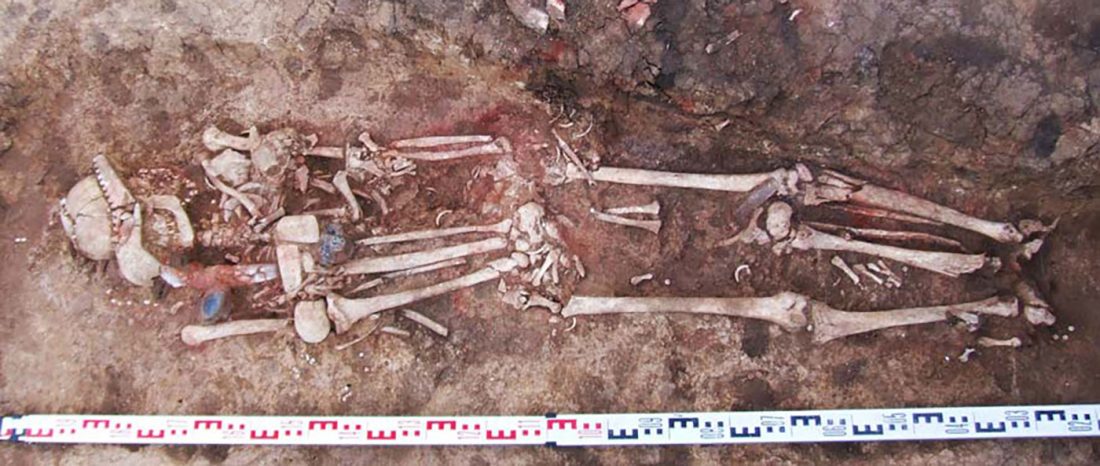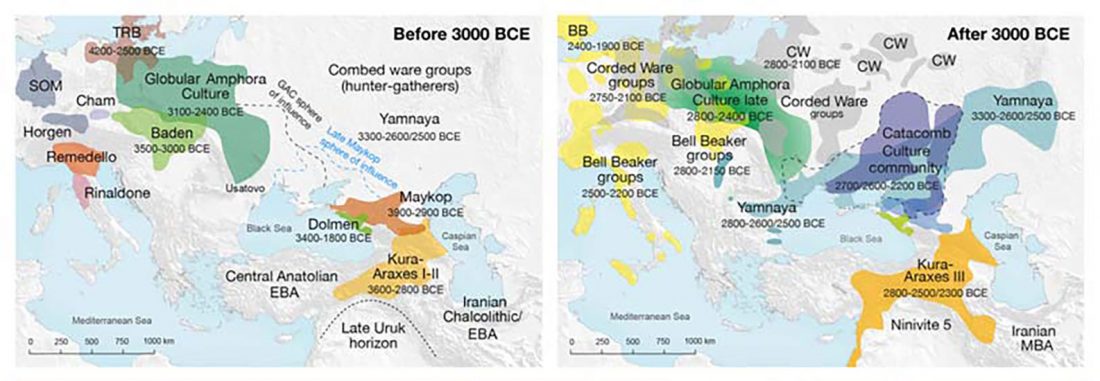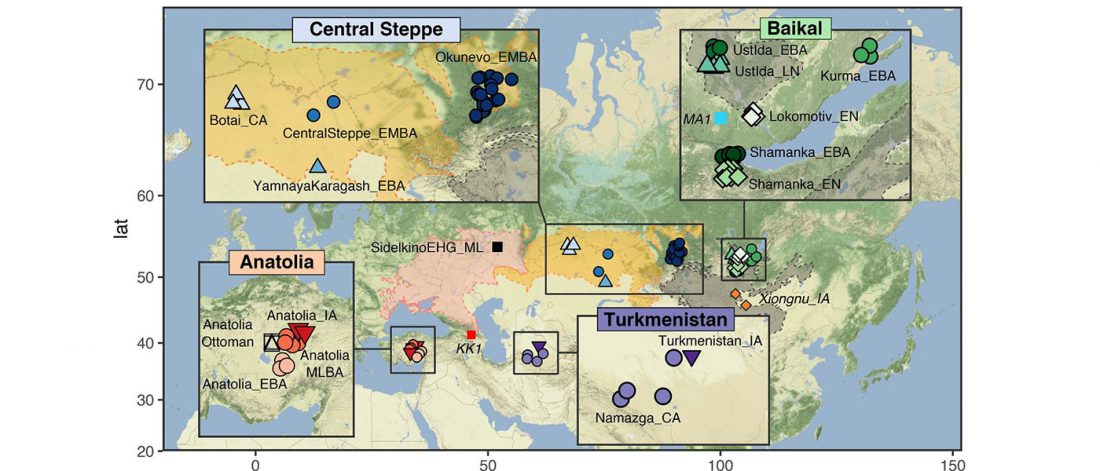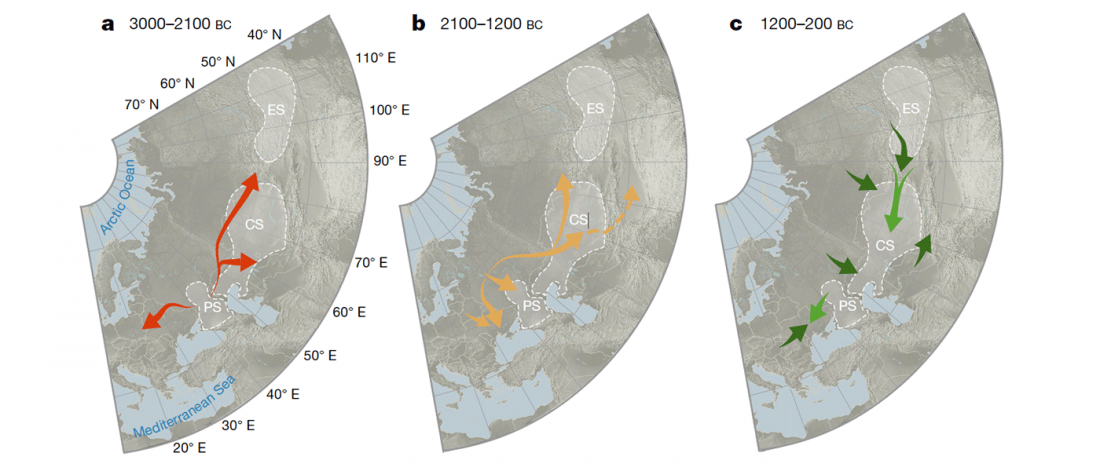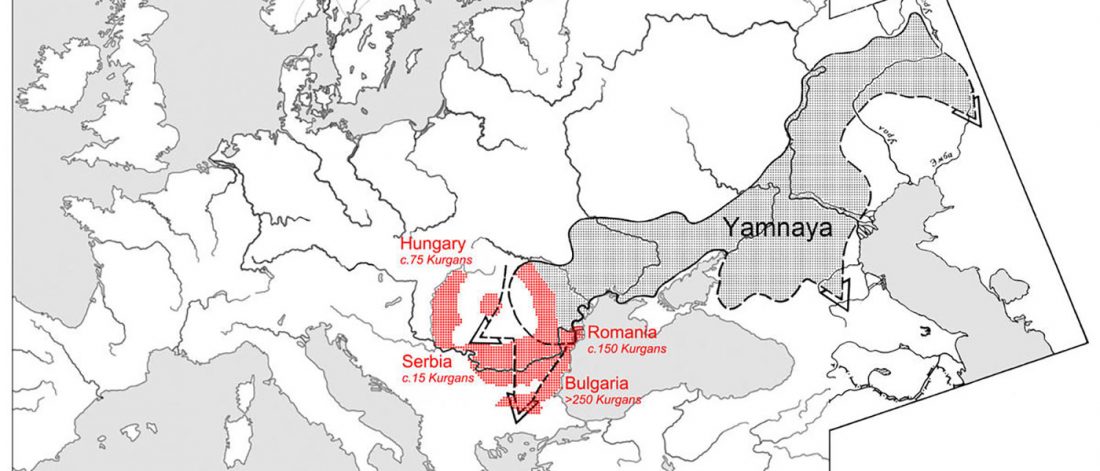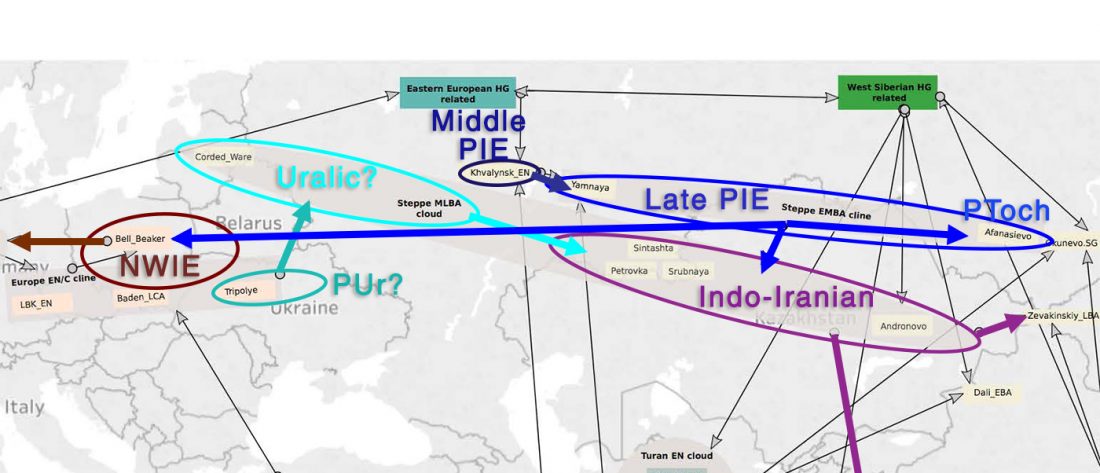Recent paper (behind paywall) The Unique Burial of the Ekaterinovsky Cape Early Eneolithic Cemetery in the Middle Volga Region, by Korolev et al. Stratum Plus (2018) Nº2.
Abstract (official, in English):
… Read the rest “The unique elite Khvalynsk male from a Yekaterinovskiy Cape burial”This is the first time we published the results of a comprehensive study of burial 45 of the eneolithic cemetery called Ekaterinovsky Cape. The burial contains the skeleton of a young man with traumatic injuries of the skull, leg and hand bones of other individuals, skeleton of a young specimen of a domestic goat (Capra hircus) that was abundantly sprinkled with red ocher. Grave goods include three stone
